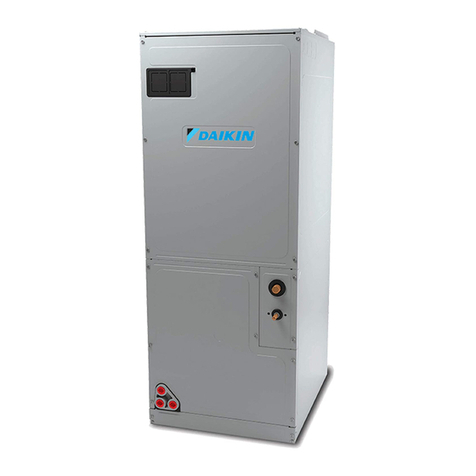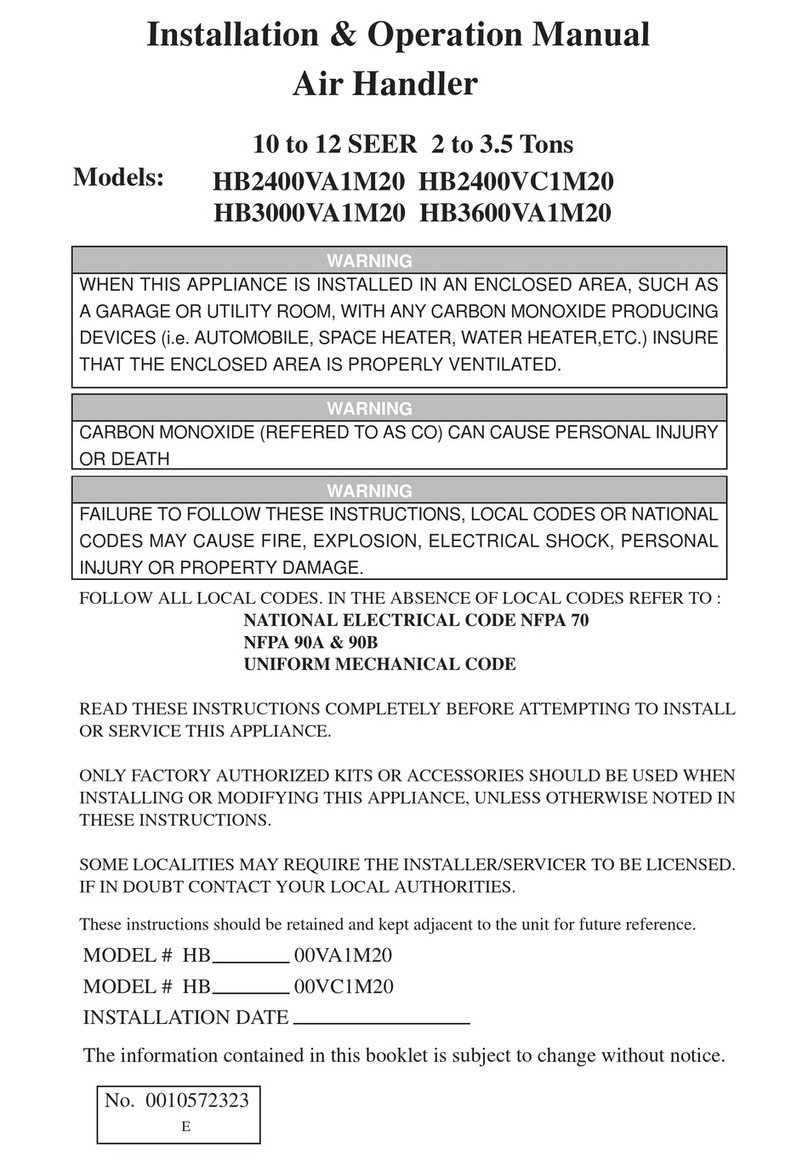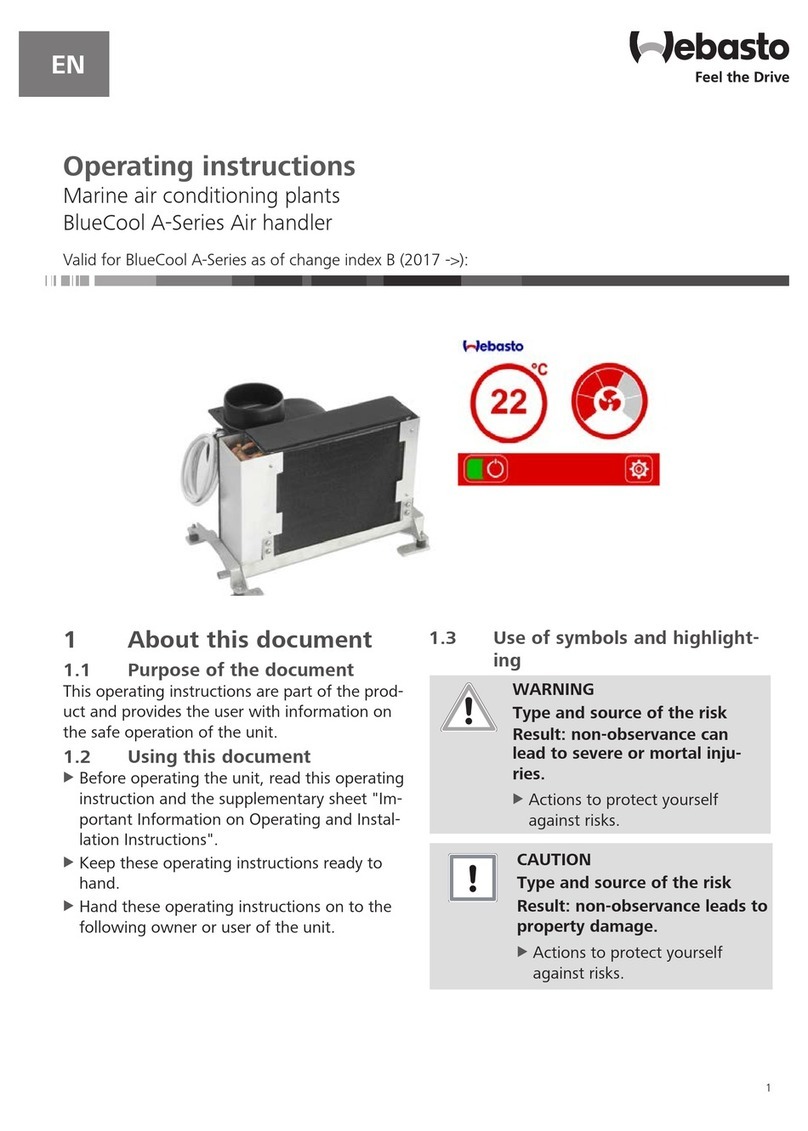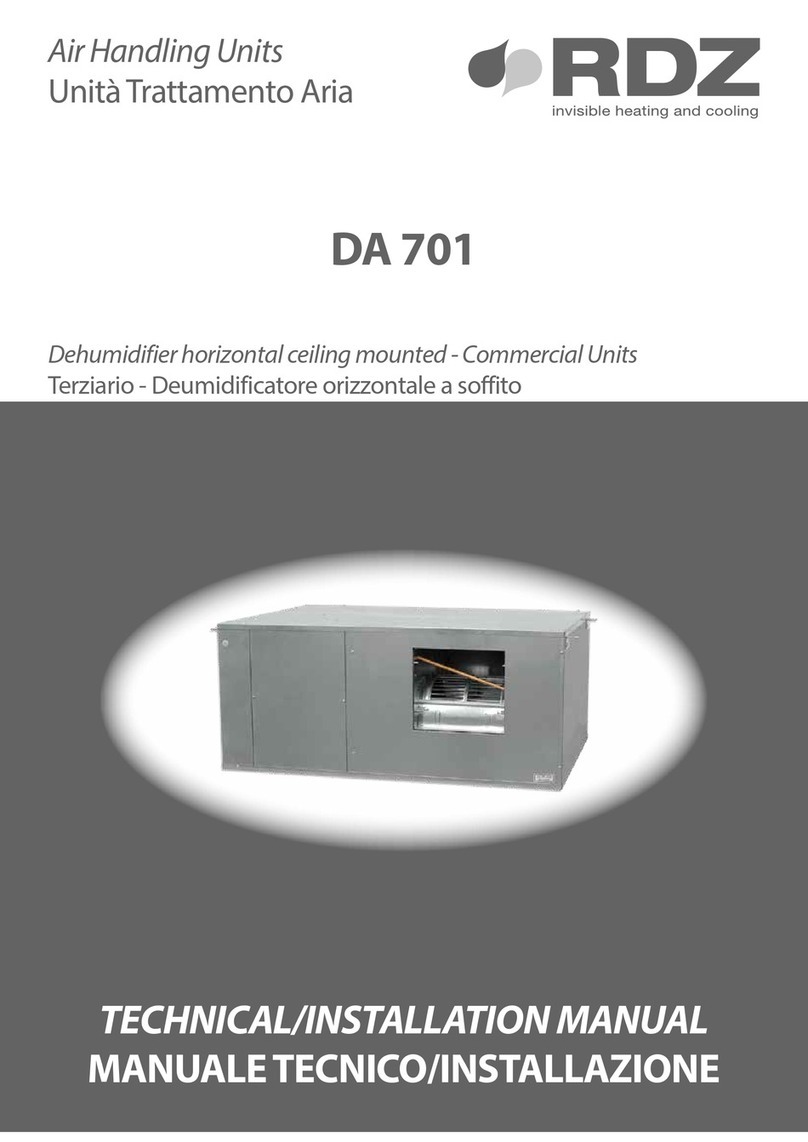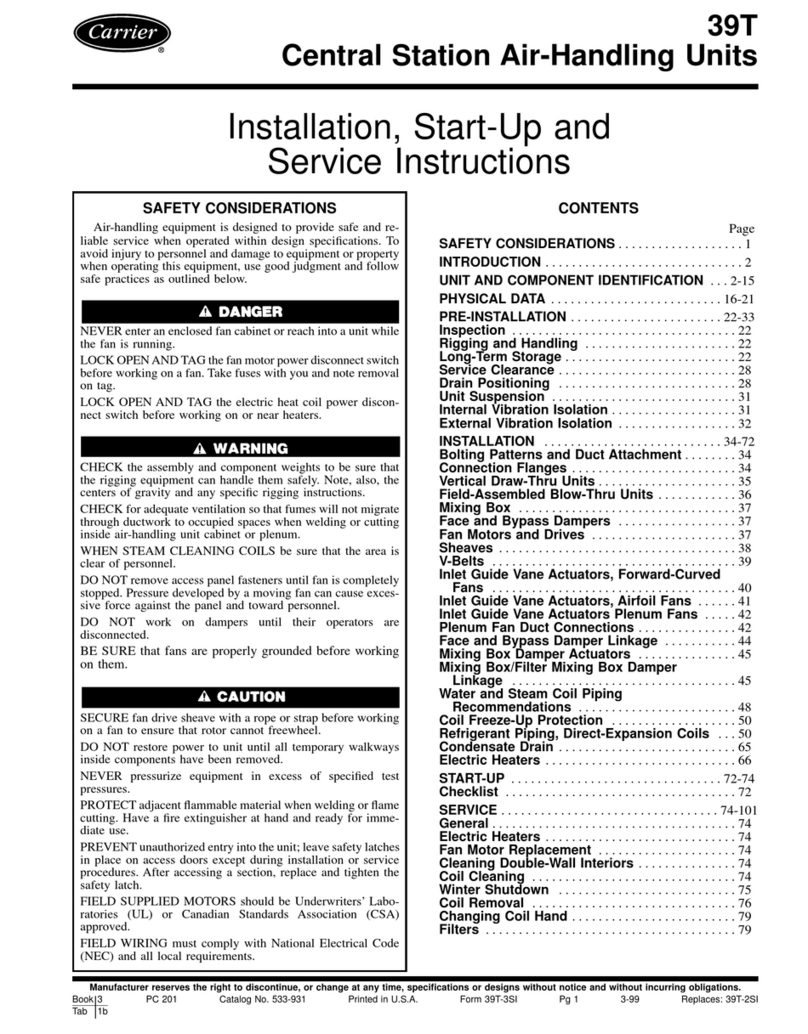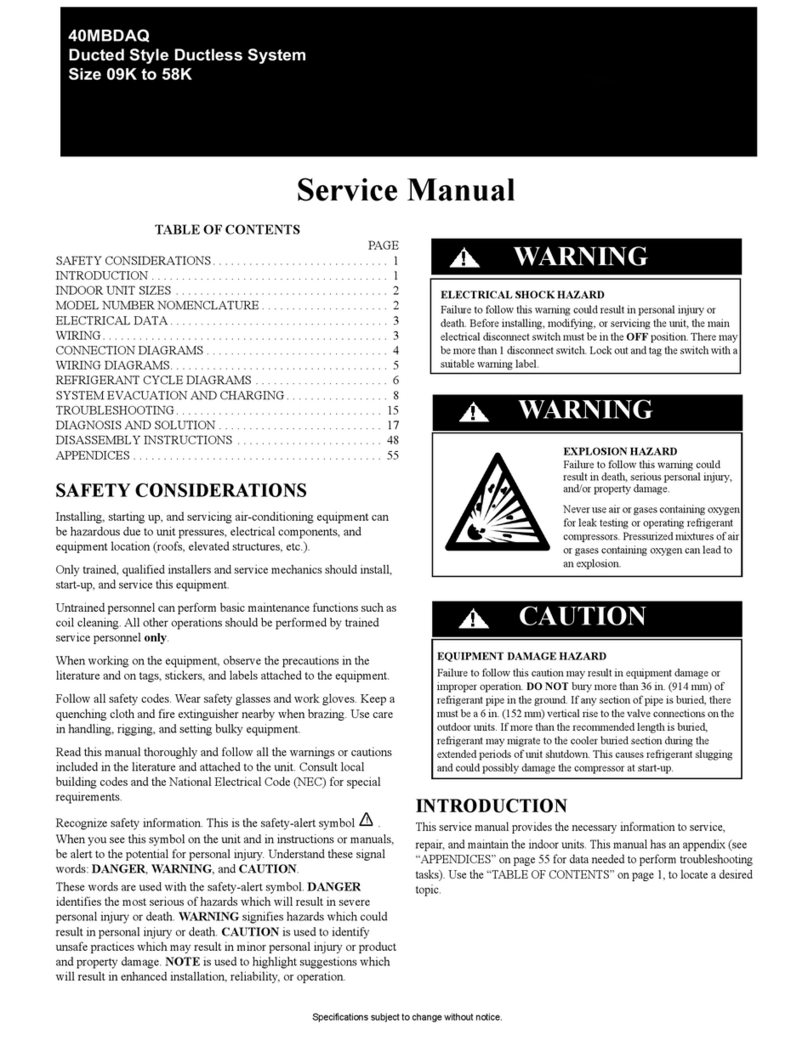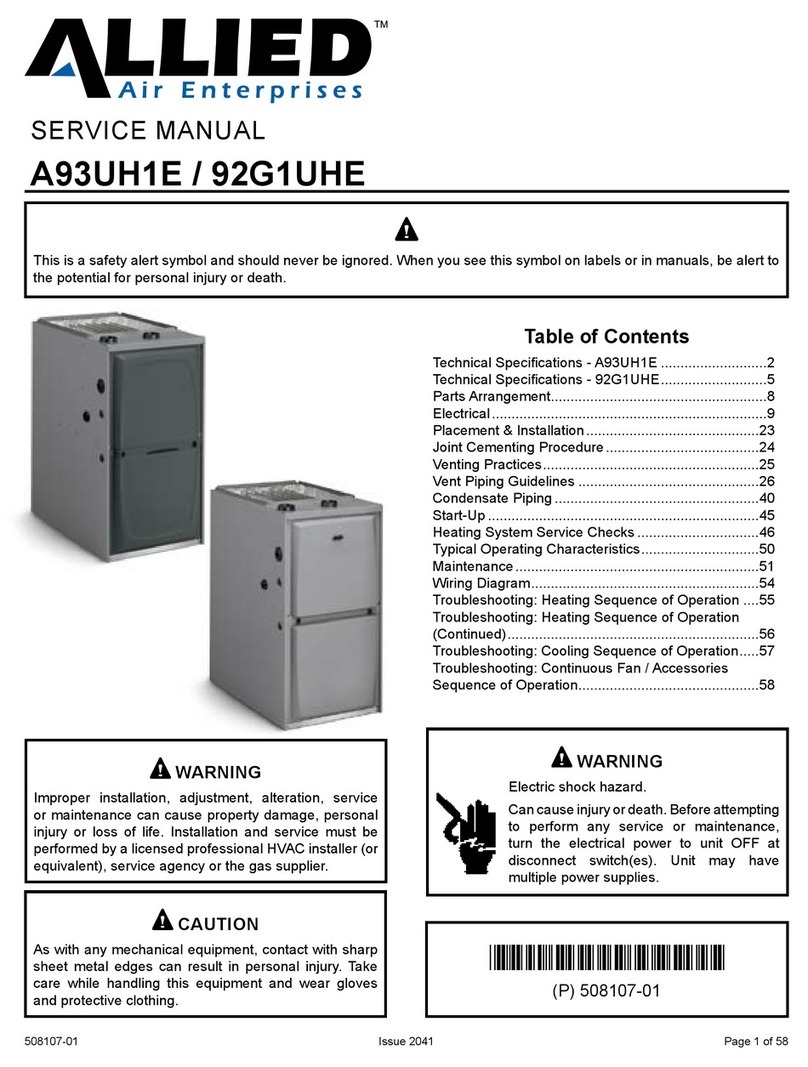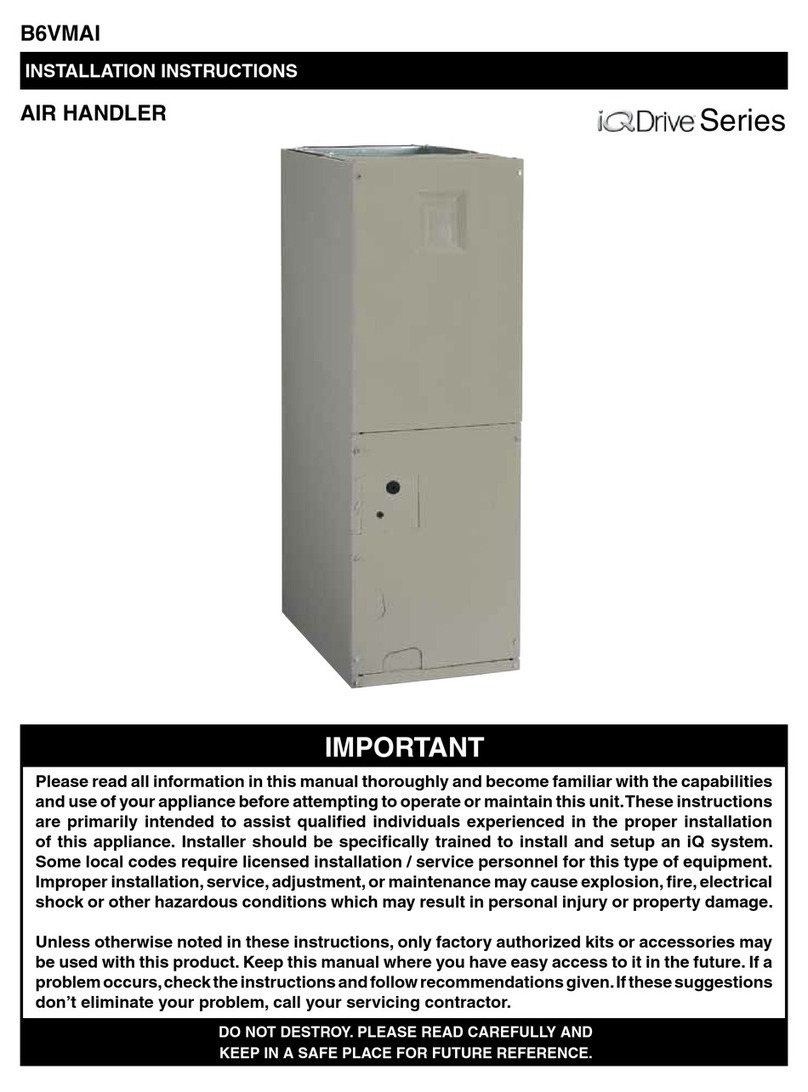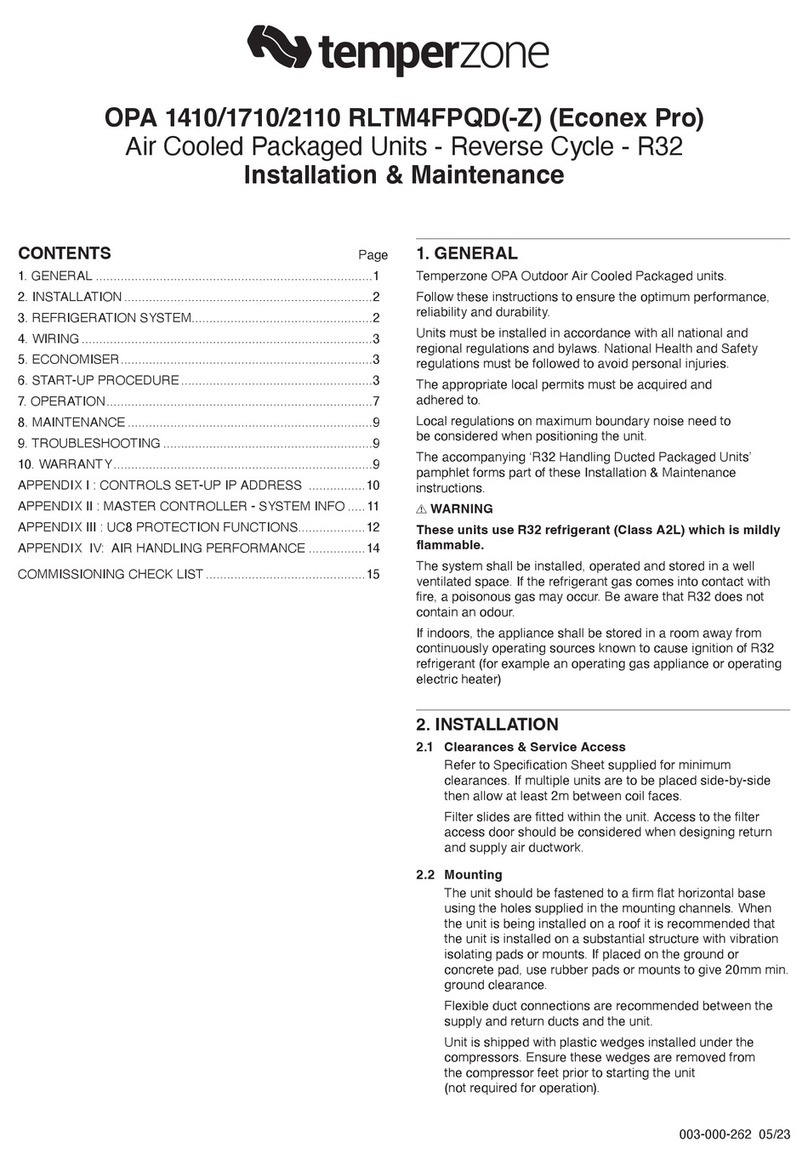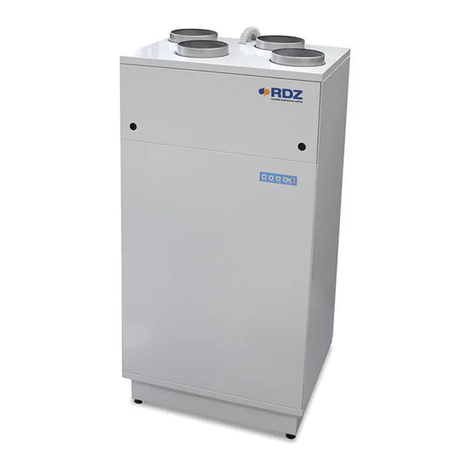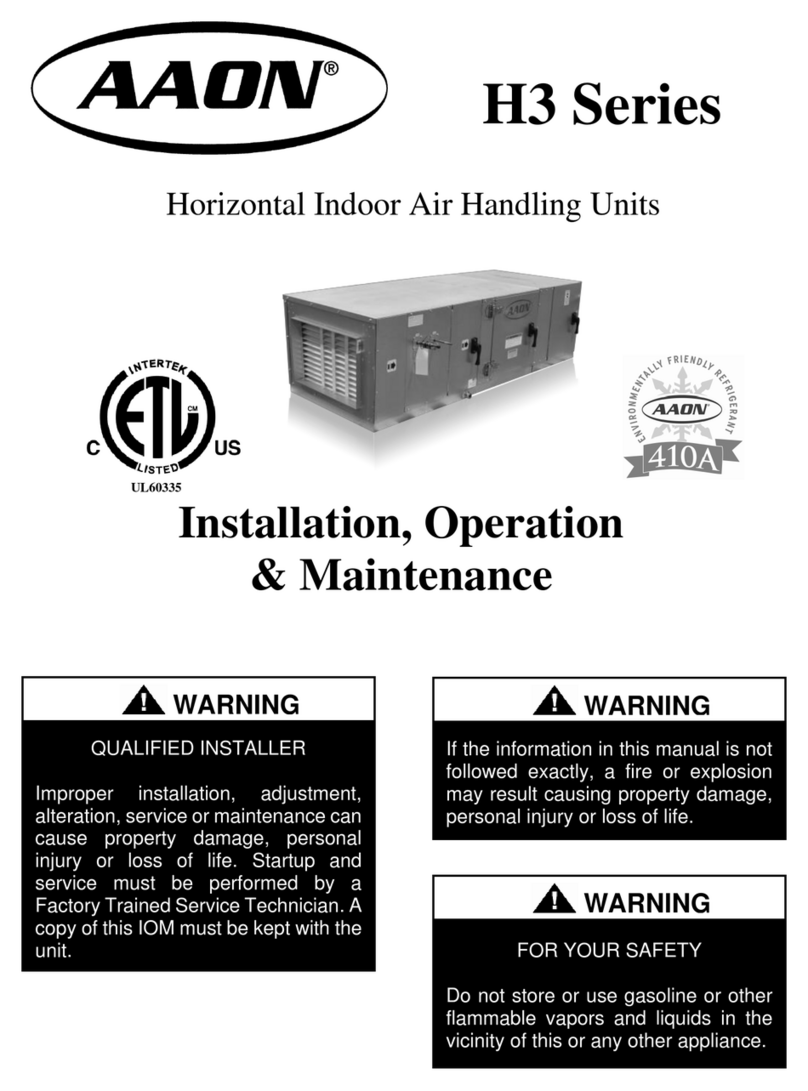
1210SHH_AMEN,page 6/29
LOCATION & INSTALLATION
5.1 General
5.1.1 Location heater
For best results, the heater should be placed with
certain rules in mind. Always ensure that minimum
clearances are maintained (cfr. figure 2). When
possible, heaters should be arranged to blow toward or
along exposed wall surfaces.
Suspended heaters are most effective when located as
close to the working zone as possible, but care should
be exercised to avoid directing the discharged air
directly on to room occupants.
Partitions, columns, counters or other obstructions
should be taken into consideration when locating the
unit heater so that a minimum quantity of airflow will be
deflected by such obstacles.
When units are located in the centre of the space to be
heated, the air should be discharged toward the
exposed walls. In large areas, units should be located to
discharge air along exposed walls with extra units
provided to discharge air in toward the centre of the
area. For optimum results heaters are best used in
conjunction with recirculating air fans suspended at high
level.
At those points where infiltration of cold air is excessive,
such as at entrance doors and shipping doors, it is
desirable to locate the unit so that it will discharge
directly toward the source of cold air, typically from a
distance of 4.5 to 6.0 meters or install a down flow unit
over the door opening.
Do not locate the heater where it
may be exposed to water or where
the ambient temperature exceeds
40°C.
The presence of chlorine vapours in the combustion air
of gas-fired heating equipment presents a potential
corrosion hazard.
Care should be taken to separate these vapours from
the combustion process. This may be done by wise
location of the unit flue and combustion air terminals
with regard to exhausters or prevailing wind directions.
Chlorine is heavier than air. Keep this fact in mind when
determining installation location of the heater in relation
to building exhaust systems.
Where chlorine vapours are prevalent heaters with
special grade 316 AISI stainless steel heat exchangers
are recommended.
5.1.2 Installation heater
Figure 2 shows the clearances necessary to ensure that
safety from combustibles and for servicing are
maintained. In the event that the appliance is required
to be installed on the floor then a non-combustible base
must be provided.
Installation on a base is required when the air handler is
composed of more than a heating and ventilation section
– suspension becomes here forbidden.
In case the installation is done by means of supporting
points, make sure that the distance between supporting
points does not exceed 1.5m. In general it is
recommended to support the base where it is screwed
down with supporting points.
Ensure that the structural elements, which will be used
to suspend or support the appliance, are adequate to
carry the weight of the appliance and its ancillary
components i.e. the flue system.
The location where the air heater is to be installed must
provide sufficient space around the heater for servicing
and clearances for safety. Beware to allow space for
the passage of vehicles i.e. lift trucks, etc …
Ensure that the air heater is installed in a level plain.
The heater must be fastened securely to any base
mount framework.
Four-point suspension is possible from the Ø 11.0 mm
holes provided in the base frame. Using drop rods etc.
Ensure that suspension fixings are lock nut secured to
secure against loosening.
When suspended, the air heater should be rigid so as to
avoid placing a stain on the flue system and connected
services.
Figure 3 : Detail fixation (only if unit & framework is
a one-part construction)
Table 2: Clearances (mm) (we also refer to figure 2)
BSHH Minimum
distance wall
not controls
side
Minimum
distance wall
controls side
Minimum
distance
floor-bottom
Minimum.
distance
ceiling-
top
055 150 730 2500 200
083 150 730 2500 200
102 150 730 2500 200
5
Hanger rod M10
2x nut &
2x washer M10





